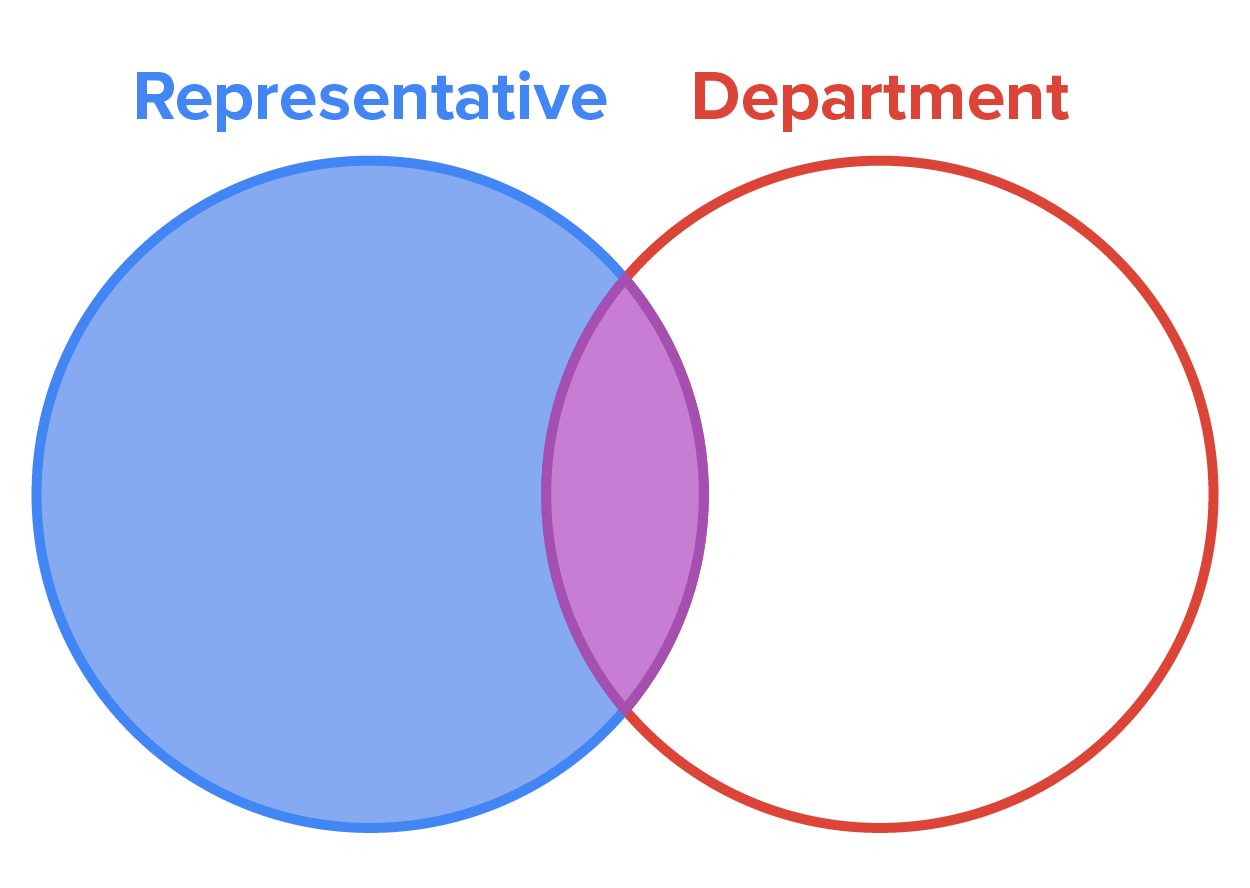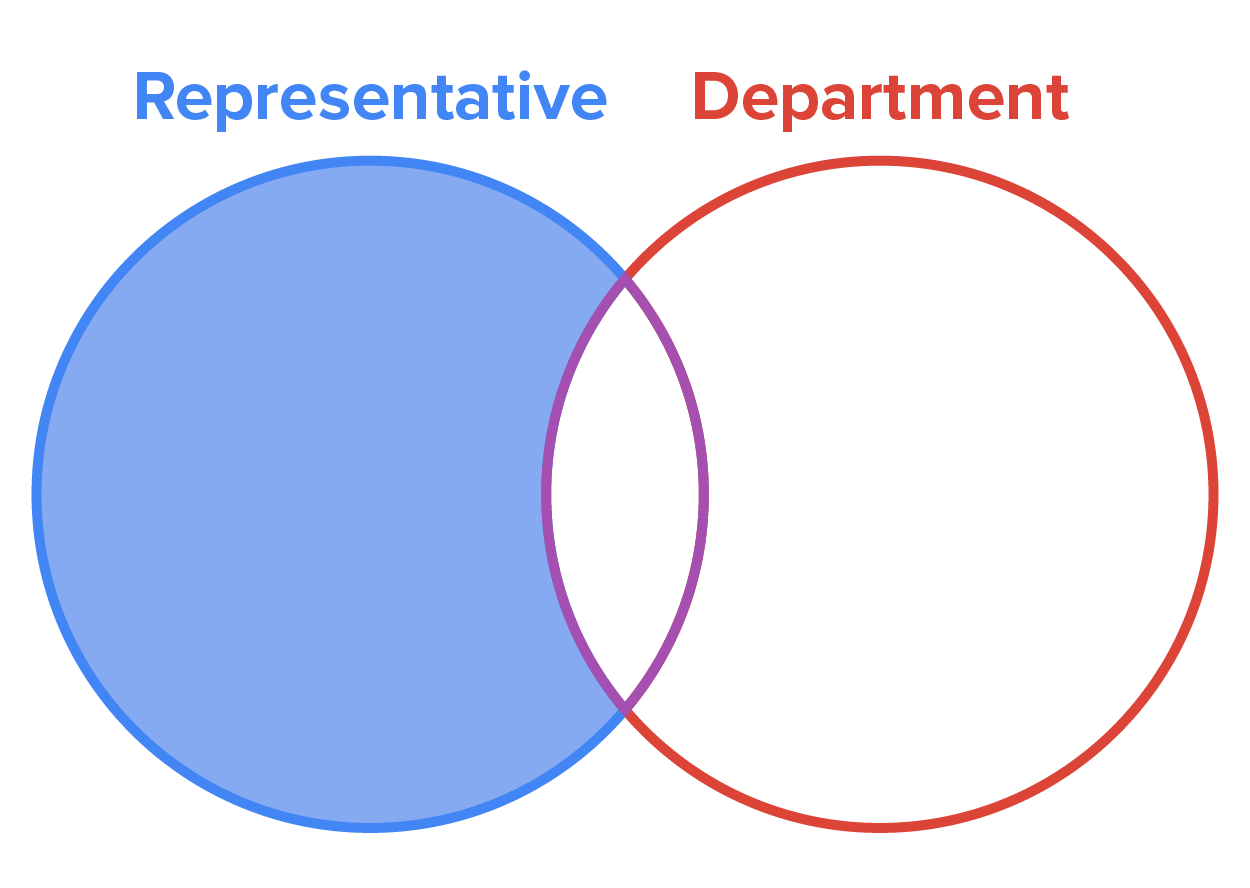Table of Contents |
A LEFT JOIN combines data from two tables based on a specified condition. The result set includes all the records from the left (or first) table, plus matching records from the right (or second table. Any unmatched rows from the left table will have NULL values. Using a LEFT JOIN, you can keep the context of all the left-hand records while incorporating relevant data from the right-hand table.
The structure of the query looks like this:
SELECT <columnlist>
FROM <table1>
LEFT JOIN <table2> ON <table1>.<table1column1> = <table2>.<table2column1>;
Let's revisit our data set with the representatives and departments again:
CREATE TABLE representative ( representative_id INT PRIMARY KEY, first_name VARCHAR (30) NOT NULL, last_name VARCHAR (30) NOT NULL );
CREATE TABLE department (
department_id INT PRIMARY KEY,
department_name VARCHAR(100) NOT NULL,
manager_id INT,
CONSTRAINT fk_manager FOREIGN KEY (manager_id) REFERENCES representative(representative_id)
);
INSERT INTO representative (representative_id, first_name, last_name)
VALUES (1, 'Bob', 'Evans'), (2, 'Tango', 'Rushmore'), (3, 'Danika', 'Arkane'), (4, 'Mac', 'Anderson');
INSERT INTO department (department_id, department_name, manager_id)
VALUES (1, 'Sales', 1), (2, 'Marketing', 3), (3, 'IT', 4), (4, 'Finance', NULL), (5, 'Support', NULL);
The LEFT JOIN clause is used to join the representative table with the department table. The first table listed in the FROM clause is considered to be the left table, and the second table is considered to be the right table.
SELECT *
FROM representative
LEFT JOIN department ON representative.representative_id = department.manager_id;

The LEFT JOIN starts to select data from the left table. It compares the representative_id from the representative table with the manager_id in the department table. If those values are equal, the LEFT JOIN creates a new row that contains the columns of both tables and adds the new row in the result set, as you can see in the first three rows returned in the image above. If the values are not equal, the LEFT JOIN also creates a new row containing columns from both tables but fills in the columns of the right table (department) with a NULL value, as you can see in the 4th row. The Venn diagram of the LEFT JOIN looks like the following:

We can optionally add a WHERE clause to find only records from the left-hand table that do not have a matching value in the right-hand table. For example, you could use the following query to return only records where manager_id is NULL—in other words, where there is no matching manager_id in the right-hand table:
SELECT *
FROM representative
LEFT JOIN department ON representative.representative_id = department.manager_id
WHERE manager_id IS NULL;

This lesson's video references this type of JOIN as a "LEFT OUTER JOIN," but don't be confused by that. There is no separate LEFT OUTER JOIN clause in SQL (although SQL will accept that syntax; it will just process it as a regular LEFT JOIN). The type of JOIN shown in the above query, and in the Venn diagram below, is accomplished by starting with LEFT JOIN and adding the WHERE clause, not by using a different JOIN clause.

Source: THIS TUTORIAL WAS AUTHORED BY DR. VINCENT TRAN, PHD (2020) AND FAITHE WEMPEN (2024) FOR SOPHIA LEARNING. PLEASE SEE OUR TERMS OF USE.